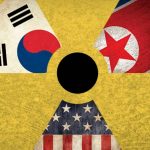Three things cannot be long hidden: the sun, the moon, and the truth.
— Buddha
Which is true, don’t you agree? Starting from personal affairs to financial schemes to events that never happened, the world has been told numerous lies throughout the history. Here you will find 45 facts about the biggest lies in history. So, let’s start with the truth.
1. A Slight Exaggeration

“The British are coming! The British are coming!” is the famous Paul Revere’s cry during his midnight ride through the streets of Concord, Massachusetts. But he never said that or even rode the streets off Concord. Thanks to Henry Wadsworth Longfellow’s poem, “The Midnight Ride of Paul Revere,” his place in the history was ensured.
2. A Modern Ponzi Scheme

Bernard Lawrence “Bernie” Madoff is an American fraudster and a former stockbroker, investment advisor, and financier. He is also former non-executive chairman of the NASDAQ stock market, and the admitted operator of a Ponzi scheme that is considered the largest financial fraud in U.S. history. Because of that he is serving a 150-year prison sentence. He was deceiving thousands of people out of tens of billions of dollars over a period of 17 years, for no apparent reason. As he testified in court, “I had more than enough money to support any of my lifestyle and my family’s lifestyle. I didn’t need to do this for that.”
3. It Wasn’t for Love

The legendary story of Van Gogh’s cut off ear is well known in the world of art; however, Van Gogh neither cut his ear off himself, nor sent it to his girlfriend. Historians nowadays do believe that his friend and fellow painter Paul Gaugin cut his ear off with his sword when the two got into a fight.
4. I Am Not a Crook!

An event that took place forty year ago is mainly famous because of Nixon’s insistence that he wasn’t guilty. Five men broke into the headquarters of the Democratic National Committee at the Watergate complex in Washington DC in a botched operation that would later spark a chain of events and two years later, Richard Nixon resigned as the 37th president of the United States.
5. Sure the War Can Be Averted

Neville Chamberlain, who served as British prime minister from 1937 to 1940, is best known for his policy of “appeasement” toward Adolf Hitler’s Germany. He Hitler’s Mein Kampf threats and signed the Munich Agreement in 1938, surrendering Czechoslovakia to the Nazis. However, Hitler had already mobilized the German army to attack Czechoslovakia and hoped that Chamberlin would prevent the Czechs from mobilizing, thus allowing a surprise German attack.
6. He Had a Few Flaws

Ghandi is revered as a symbol of peace and as a champion for civil rights, but few people know of his not-so-shiny side. This same man has been accused of a great number of crimes and oddities, for which he is rarely held accountable: sleeping naked with young teenage girls to test his chastity, racism against the blacks of South Africa, a believer in the discriminative Caste system, a Hindu nationalist, referring to Adolf Hitler as a ‘friend’ and allowing his own wife to die from bronchial pneumonia. He was also a misogynist – he believed that a woman who has been raped lost her value as a human being, women who used contraception were labeled whores’, justified the honour killing of daughters over sexual assault – to preserve a family’s honour. Regarding sex, Gandhi had some rather misshapen and obsessed views. He hated his own sexual desires, and preached that sexual intercourse was bad for the health and led to bodily complaints, such as constipation. He is quoted as saying that sexual freedom would be the downfall of India’s people.
7. Don’t Mess with a Sicilian

Athenian General Alcibiades who was also considered great and compulsive liar and manipulator during the peak of the Peloponnesian War in 415 BCE sold an idea to the Athenians that if they conquer Sicily they would win the war. But one of the generals, named Nicias, who was a very wise man, thought the idea was rash and hopeless, so he deliberately oversold the number of troops required to conquer Sicily, in the hopes of dissuading the Athenians. However, the lie did not dissuade them; on the contrary it encouraged the Athenians to send almost their entire army into battle. Unfortunately, as Nicias had predicted, the campaign was a catastrophic failure and the entire army was killed in the battle, except for a few hundred deserters.
8. A Fake Discovery

In 1912, an unusual skull was discovered in Piltdown, England. It was believed to be the remains of an early human, but decades later, the specimen was proved a fake. It turned out to be an orangutan jaw grafted onto a human skull. Who would go to that kind of trouble just to fool biologists?
9. Don’t Tell Anyone We Cracked the Code!

A brilliant mathematician, Alan Turing was being already working part-time for the British Government’s Code and Cypher School before the Second World War broke out. He successfully cracked the Nazi Enigma code, but the allies did not want the information to be found out by the Germans, so they called it ‘Ultra’. The campaign was planned and intentional series of lies agreed to keep the Nazis thinking that the code was intact. The fraud continued for several years, and according to Churchill, was the reason they won the war.
10. It Wasn’t That Heavy

Although Knight’s plate armor looks extremely heavy and is believed so by many people, it is not true. The armor weighed only between 30-50 pounds, which is pretty light, so they could wear it and move freely since it was designed to stop slashing swords and other deadly weapons.
11. Only Good News!

All through the War in Vietnam, President Lyndon B Johnson deliberately covered negative information about the progress of the war. While TV journalists had a responsibility to cover the Vietnam War with “all its horrors,” and their goal was neither to shock viewers nor sensationalize the news, President Lyndon Johnson had a very different view. He was so obsessed with how television would cover the war, so he monitored the newscasts on banks of three televisions in the Oval Office — one tuned to each major network. He even had them installed in his hospital room when he had gall bladder surgery. He did that as a means of using the “strong support of the American public” as a tool for negotiating peace.
12. So He Didn’t Chop Down that Cherry Tree?

Honesty is worth more than a thousand trees. The cherry tree myth is the most well-known and longest enduring legend about George Washington who as a 6 year old child cut the cherry tree with his gift hatchet. When asked by is father about the deed, he confessed the action “I cannot tell a lie…I did cut it with my hatchet.” Unfortunately, this iconic story about the value of honesty was invented by one of Washington’s first biographers.
13. Smarty pants

Henricus Antonius “Han” van Meegeren. A Dutch painter and portraitist who was considered to be one of the most ingenious art forgers of the 20th century. By forging the work of famous artists and selling them as his own masterpieces he made millions. Van Meegeren became a national hero after World War Two when it was revealed that he had sold a forged painting to Reichsmarschall Hermann Göring during the Nazi Occupation of the Netherlands.
14. He Has Them, I Swear!

Saddam Hussein destroyed his last weapons of mass destruction more than a decade ago and his capacity to build new ones had been dwindling for years by the time of the Iraq invasion. This is often cited as a lie used to make the case for the war, and was directly contradicted by many major sources of intelligence. The WMD threat assessment was largely based on reports by Ahmed Alwan al-Janabi (a man who German intelligence had warned the CIA about) and Muhammad Harith, a former Iraqi intelligence officer. Their information was dismissed by British intelligence as a complete fabrication ten months prior to the war.
15. It’s Under Control!

Three days after the virtual news blackout, the Soviet authorities have finally admitted that the Chernobyl nuclear accident is a “disaster” and some people have been killed and many thousands more evacuated. The official statement said that two people had died in the accident, but the “radiation situation” was now stabilized and the three other nuclear reactors on the lakeside site 50 miles north of Kiev successfully shut down and “placed in industrial reserve”. However, the exact number of deaths still remains unknown.
16. A Bad Time to Be a Catholic!

Religion was a great problem for the Tudors. In 17th century England, the Tudor monarchs had declared Protestantism the national religion but by 1600 there had been several swings between Catholicism and Protestantism led by the crown and the nobles and tension between Protestants and Catholics was running high. Queen Elizabeth I tried to find a balance between the two with a moderate form of Protestant church. Titus Oates, a mastermind betrayer protestant came up with a fake conspiracy called “The Popish Plot” and convinced the English that the Catholics intended to assassinate the king. Many Catholics were executed before Oates’ plot was uncovered.
17. They’ve Always Been That Way

How Stonehenge was built and by whom is one of the world’s biggest mysteries, but have they really been standing in the same position for 4000 years? The monument has undergone several restorations, and evidence suggests that several stones have been replaced and rebuilt.
18. It Wasn’t the Potatoes

The Great Famine (the Great Hunger) was a period of mass starvation, diseases and emigration in Ireland between 1845 and 1849. During this period, about one million people died and a million more emigrated from Ireland. The proximate cause of famine was potato blight which ravaged potato crops throughout Europe during the 1840s.
Cecil Woodham-Smith, wrote in The Great Hunger; Ireland 1845-1849 that, “…no issue has provoked so much anger or so embittered relations between the two countries (England and Ireland) as the indisputable fact that huge quantities of food were exported from Ireland to England throughout the period when the people of Ireland were dying of starvation.”
“Although the potato crop failed, the country was still producing and exporting more than enough grain crops to feed the population. But that was a ‘money crop’ and not a ‘food crop’ and could not be interfered with.”
English overlords turned away planned boats full of food that were sent to Ireland from charitable nations around the world, and Irish farmers were forced to export their crops.
19. We’re Totally Not Building a Wall!

On 15th June 1961, two months before the Berlin Wall was erected, German Communist leader Walter Ulbricht, stated at a press conference, ‘The builders of our capital are fully engaged in residential construction, and its labour force is deployed for that’; finishing with the remark: ‘No one has any intention of building a wall.’, On 12‒13 August 1961, a barbed-wire fence was erected. The ‘not intended’ wall separated east and west Germany almost thirty years before it was brought down.
20. Not for Everyday Use

Although a Viking with a horned helmet is a common image for many people around the world, it is still a modern myth. Horned helmets did exist but were probably worn for religious ceremonial or ritual purposes. The Vikings had long hair and long moustaches with neatly trimmed beards. On their heads they used to wear hoods or fur caps. They used to wear helmets only in battles.




































Connect with us